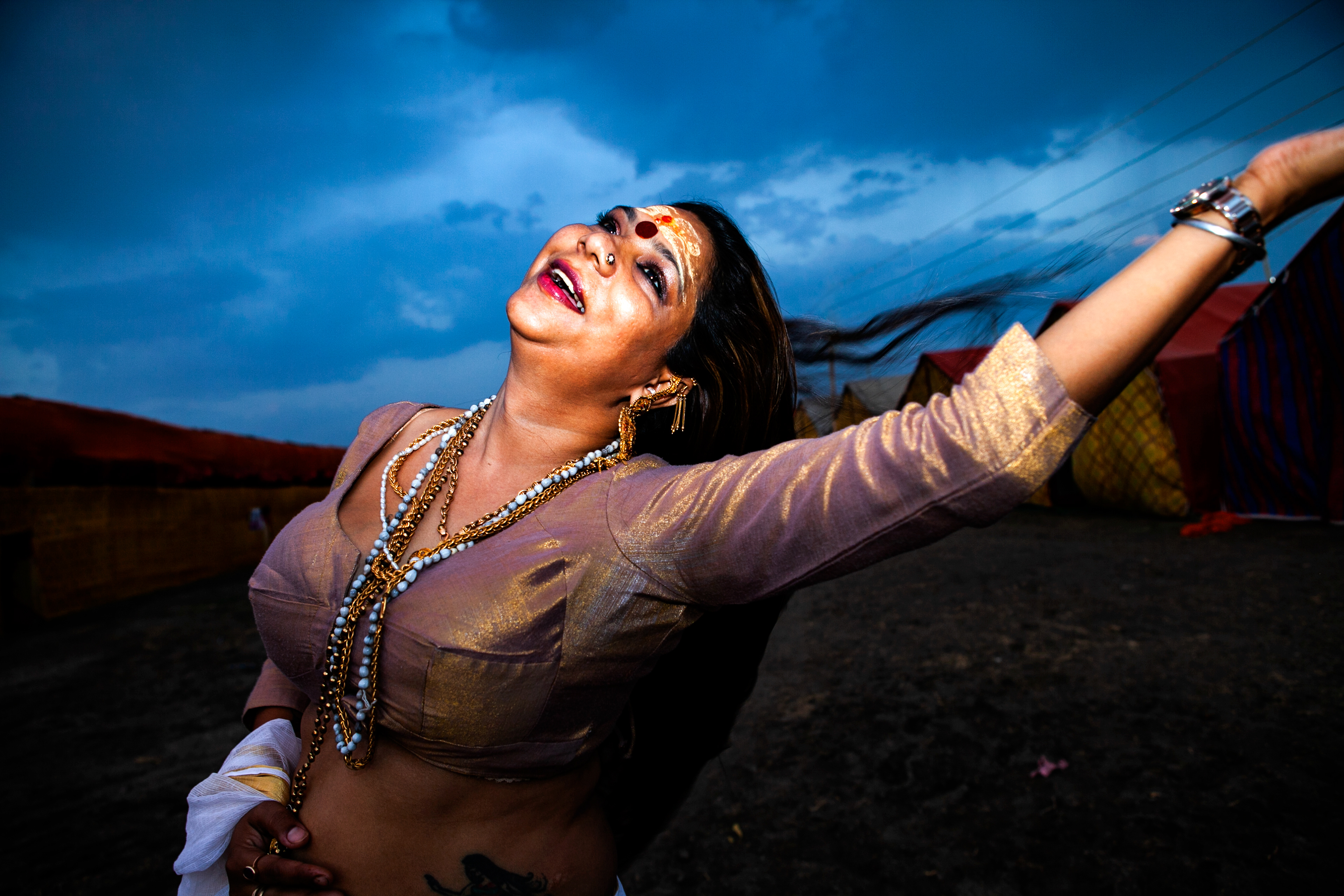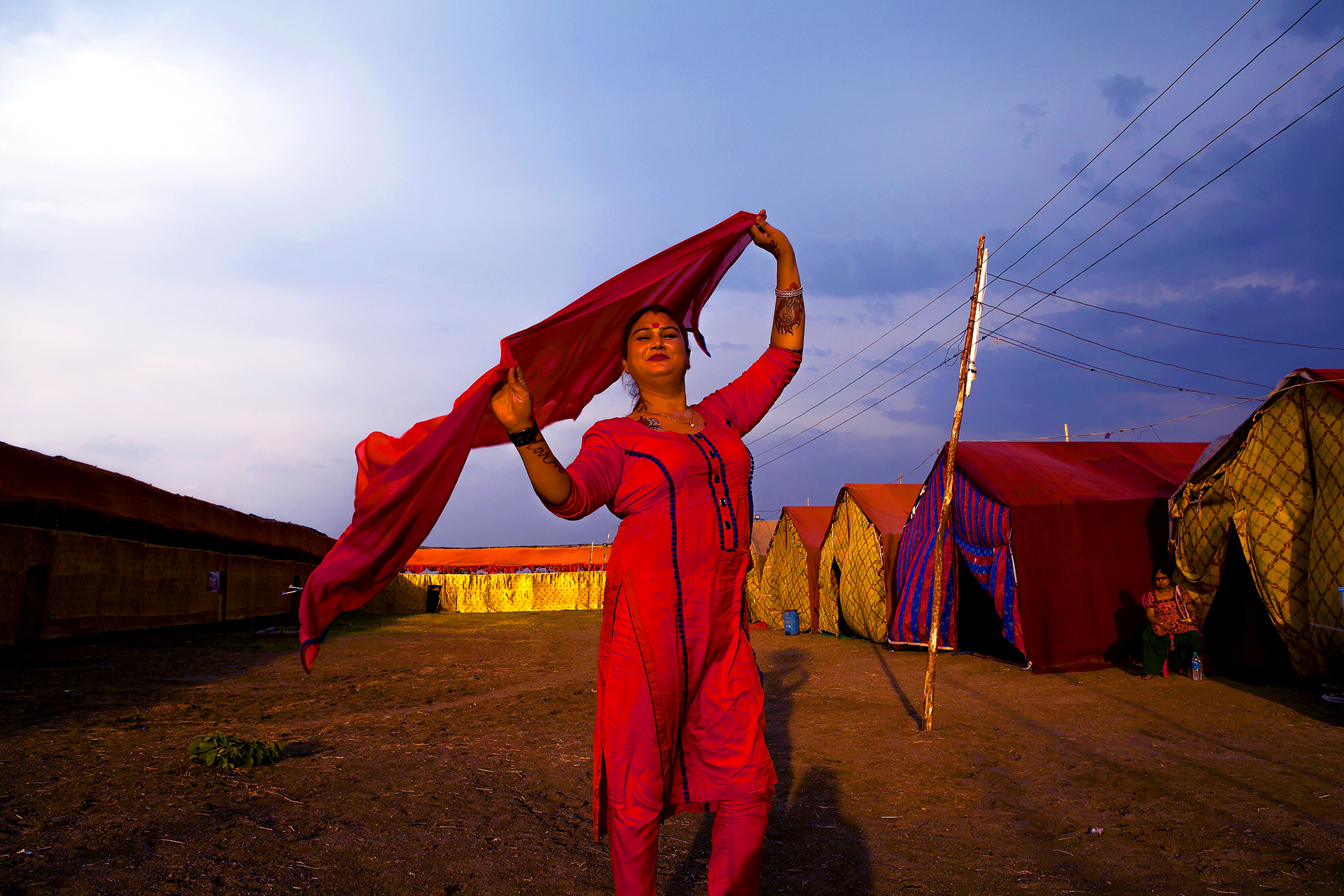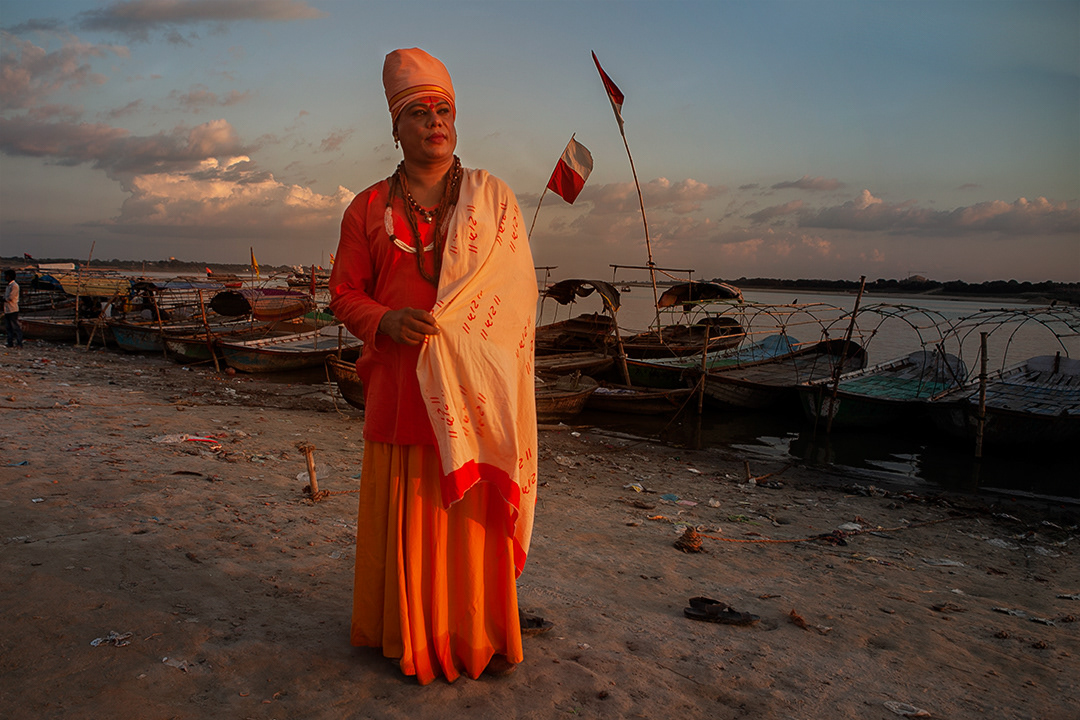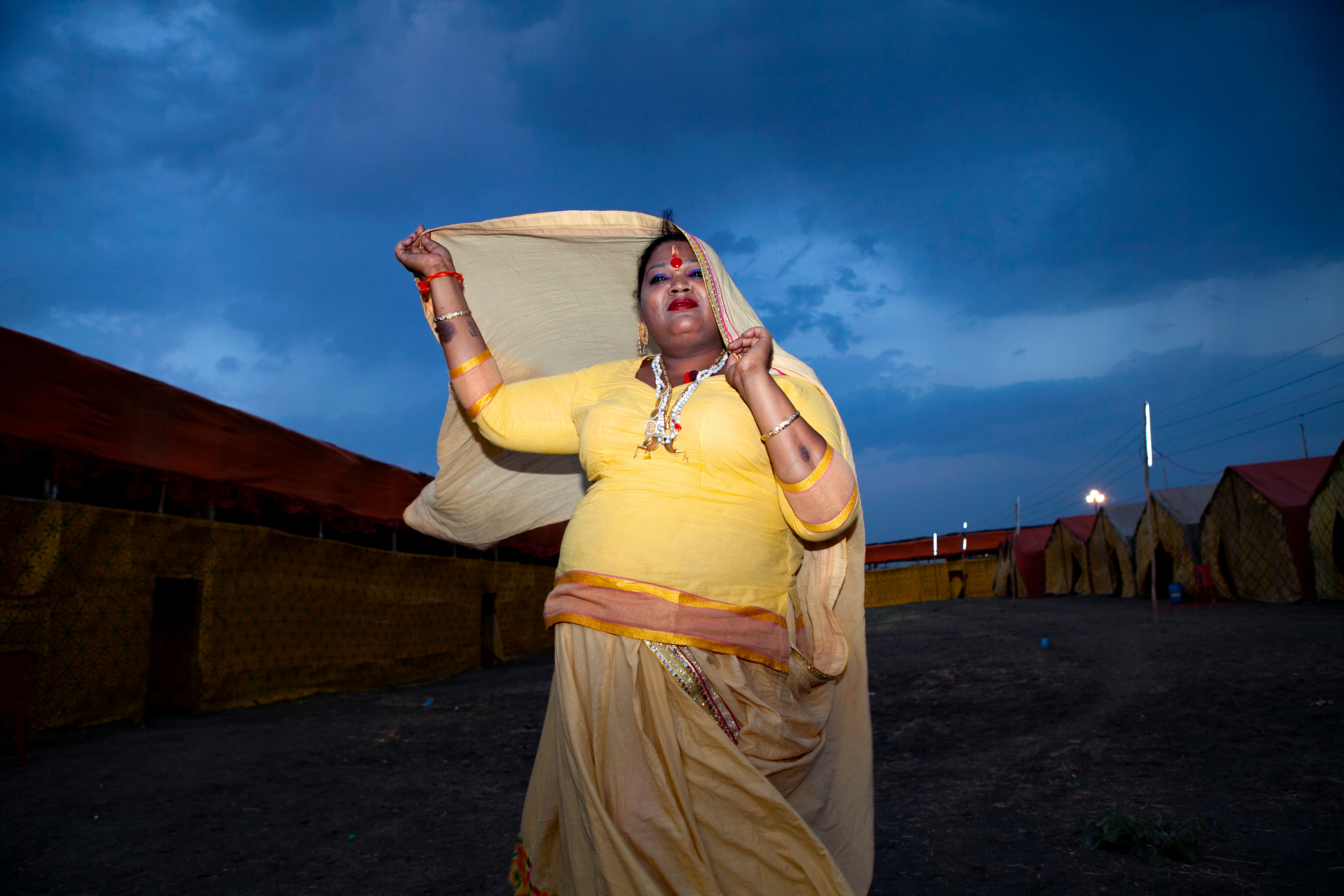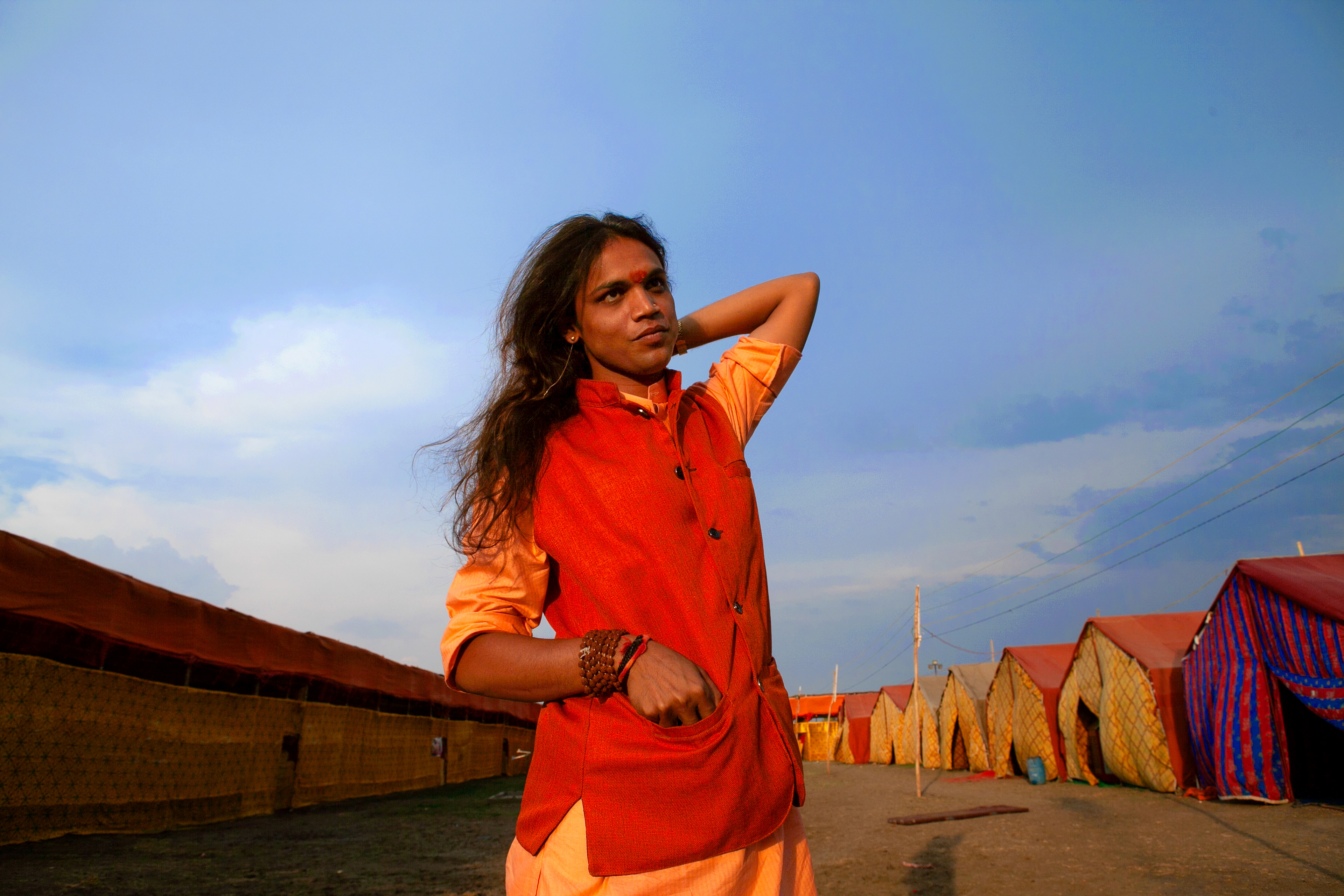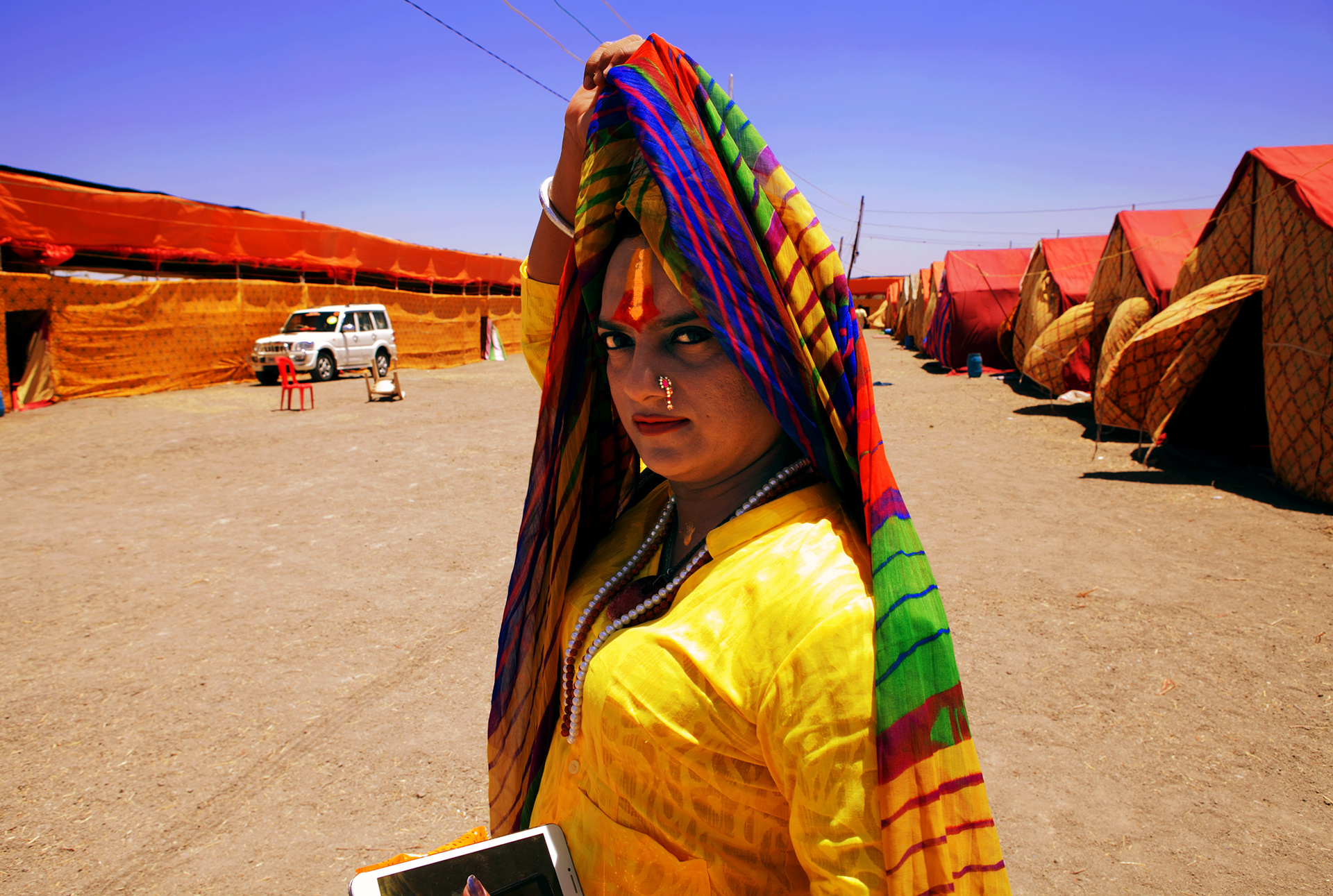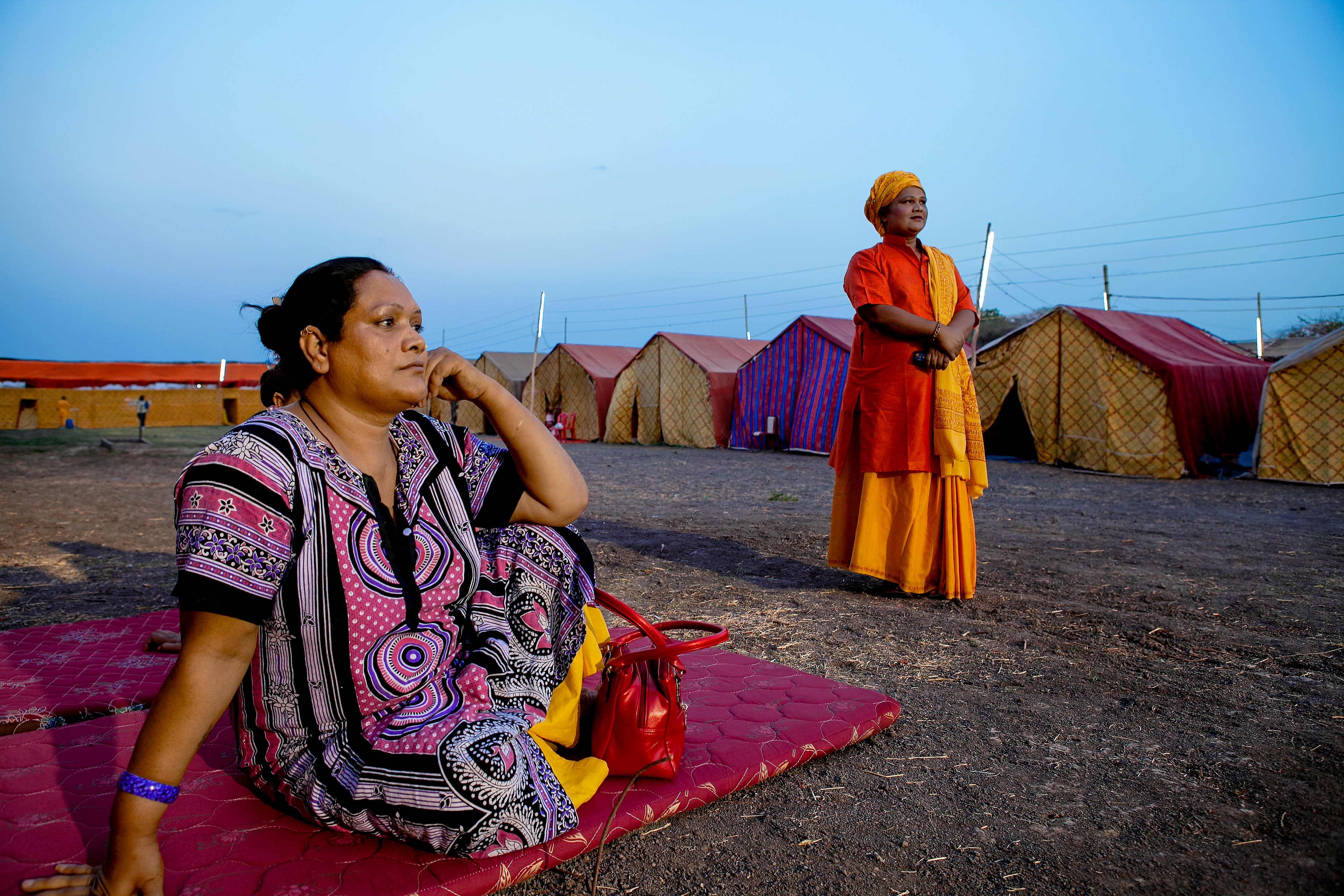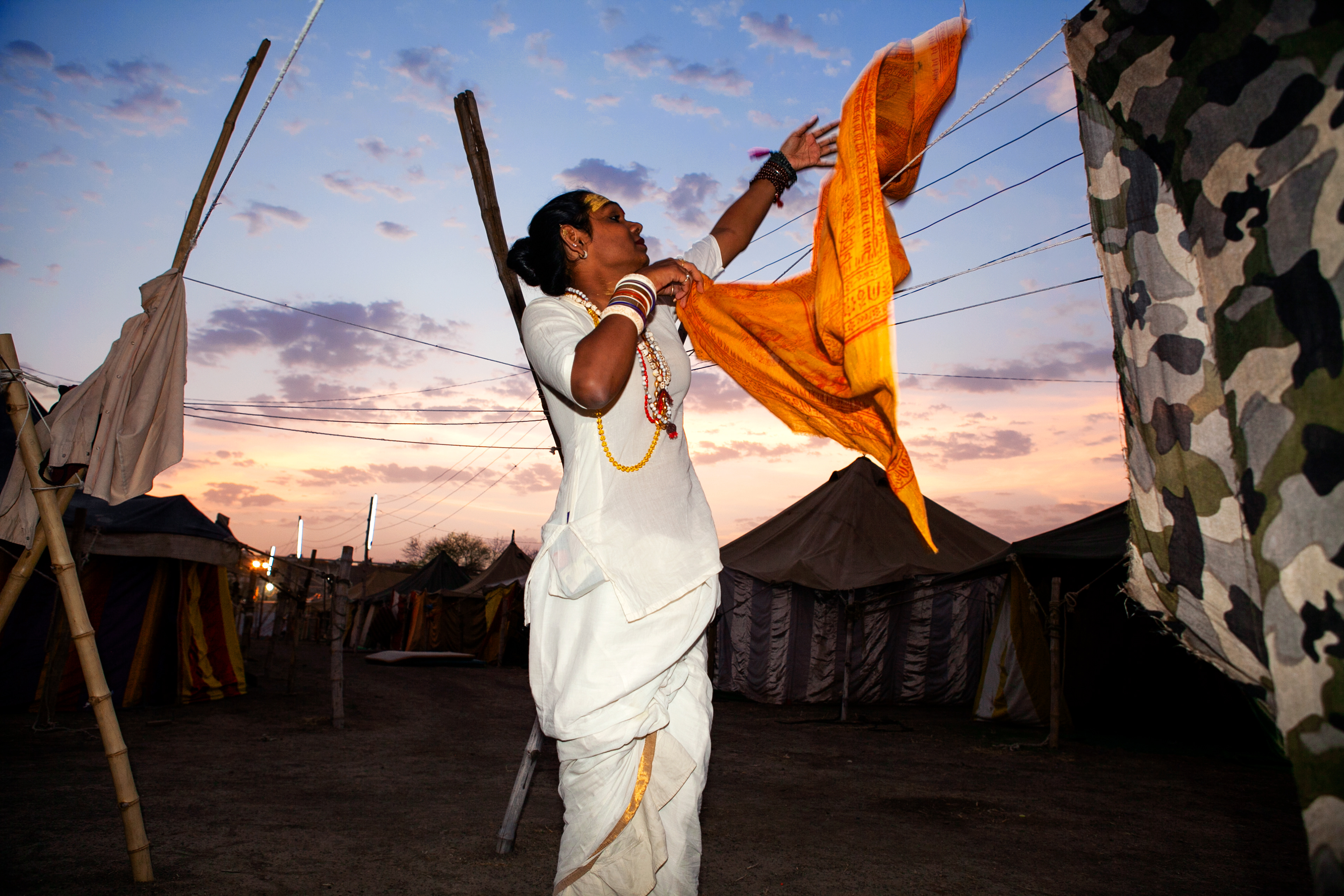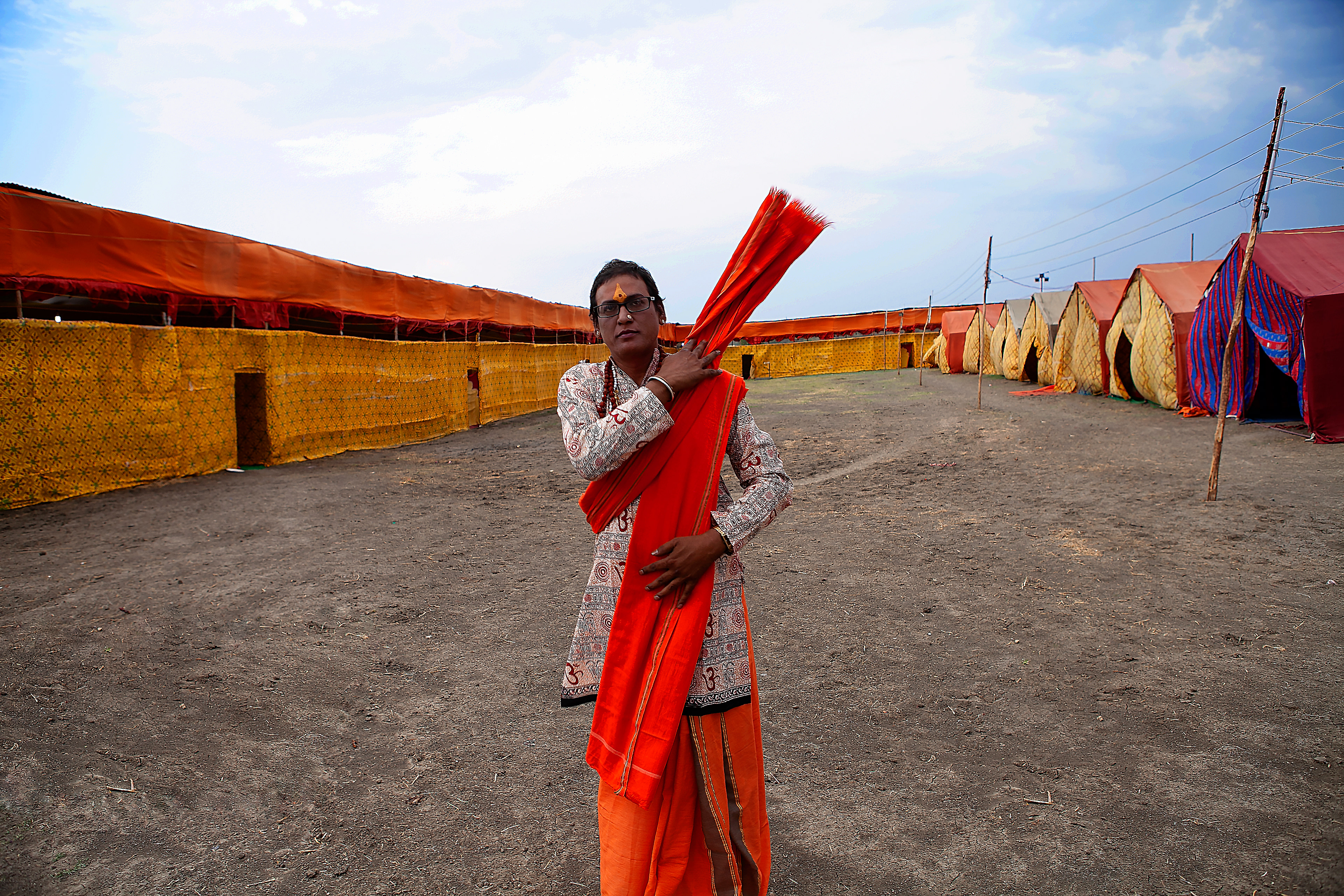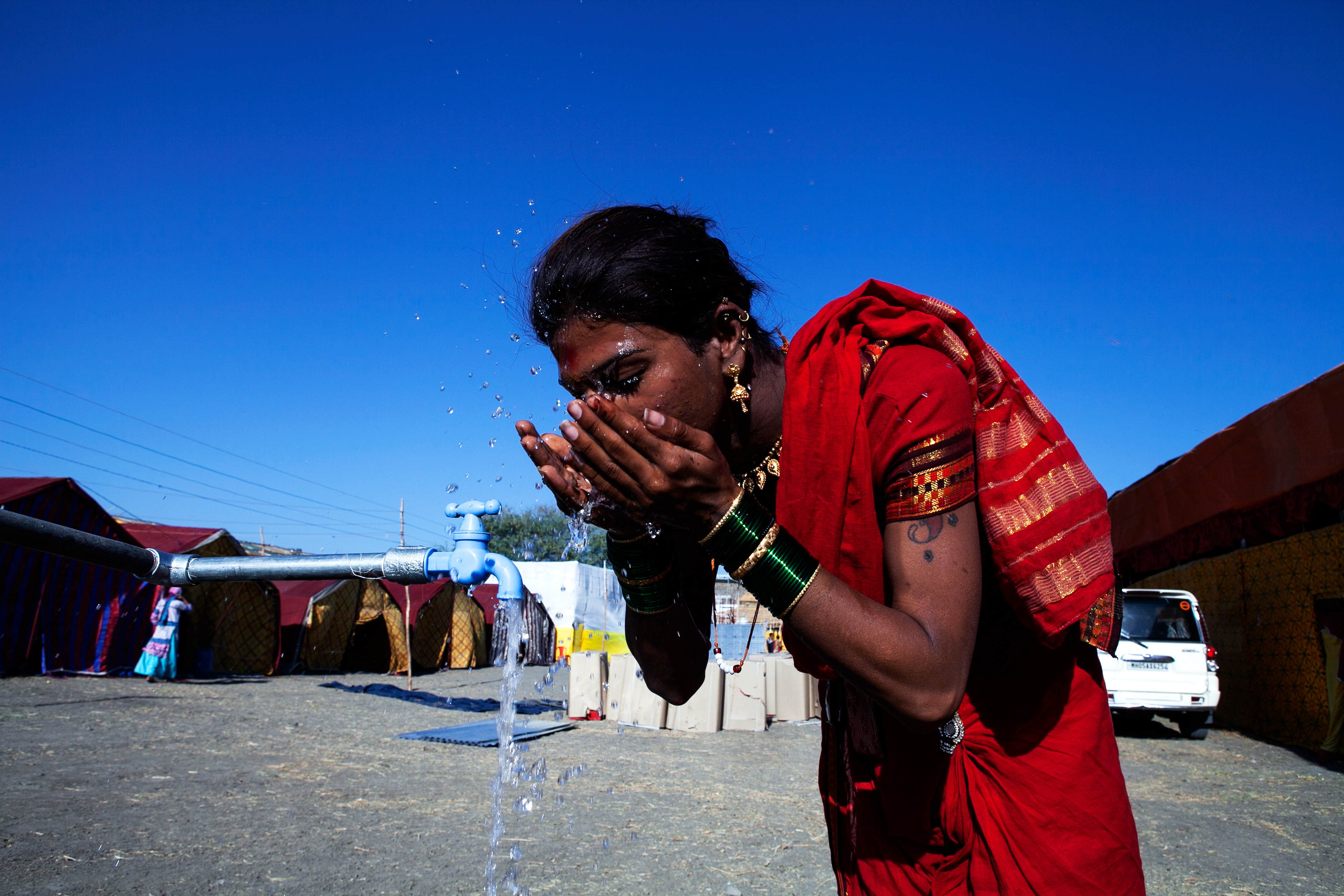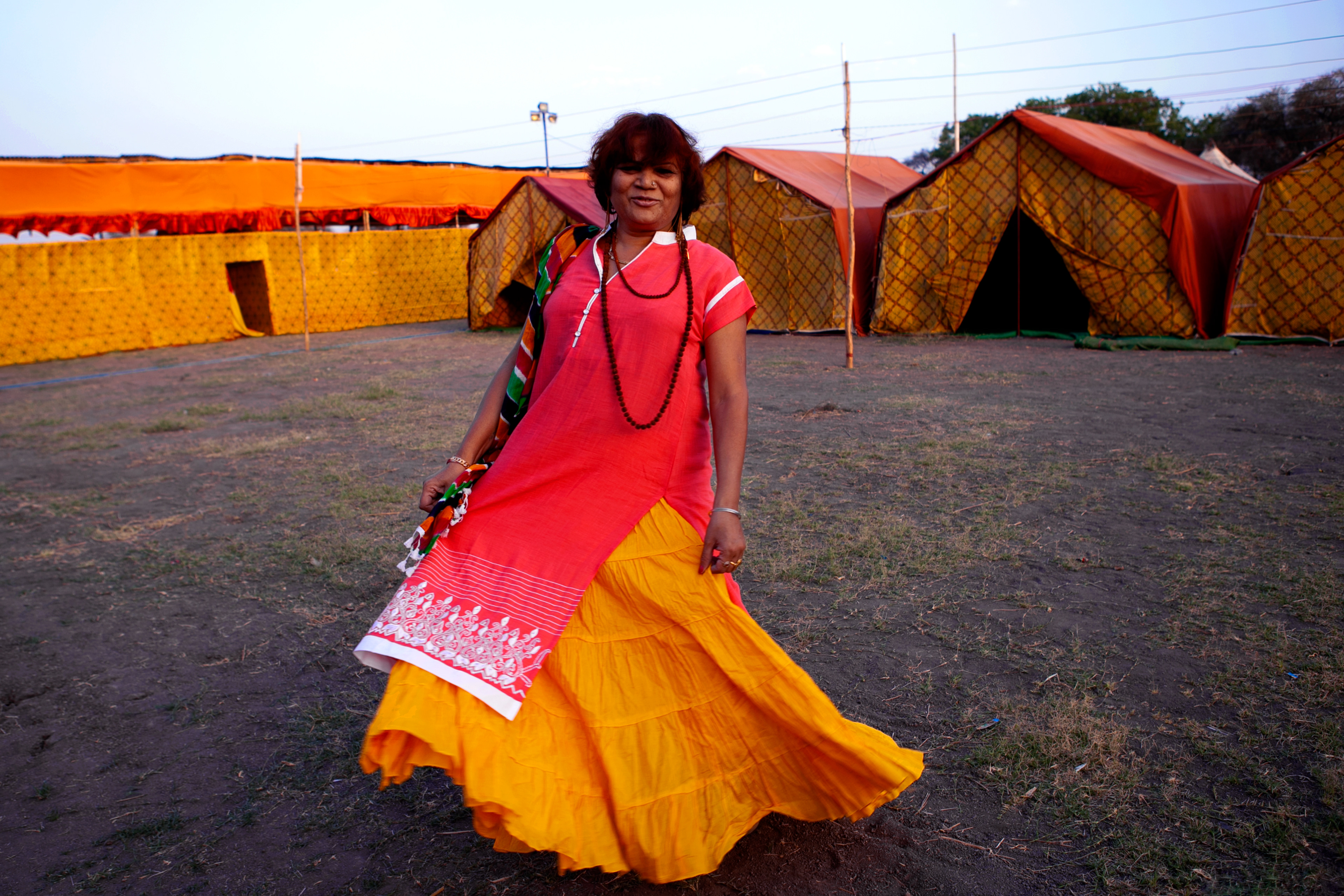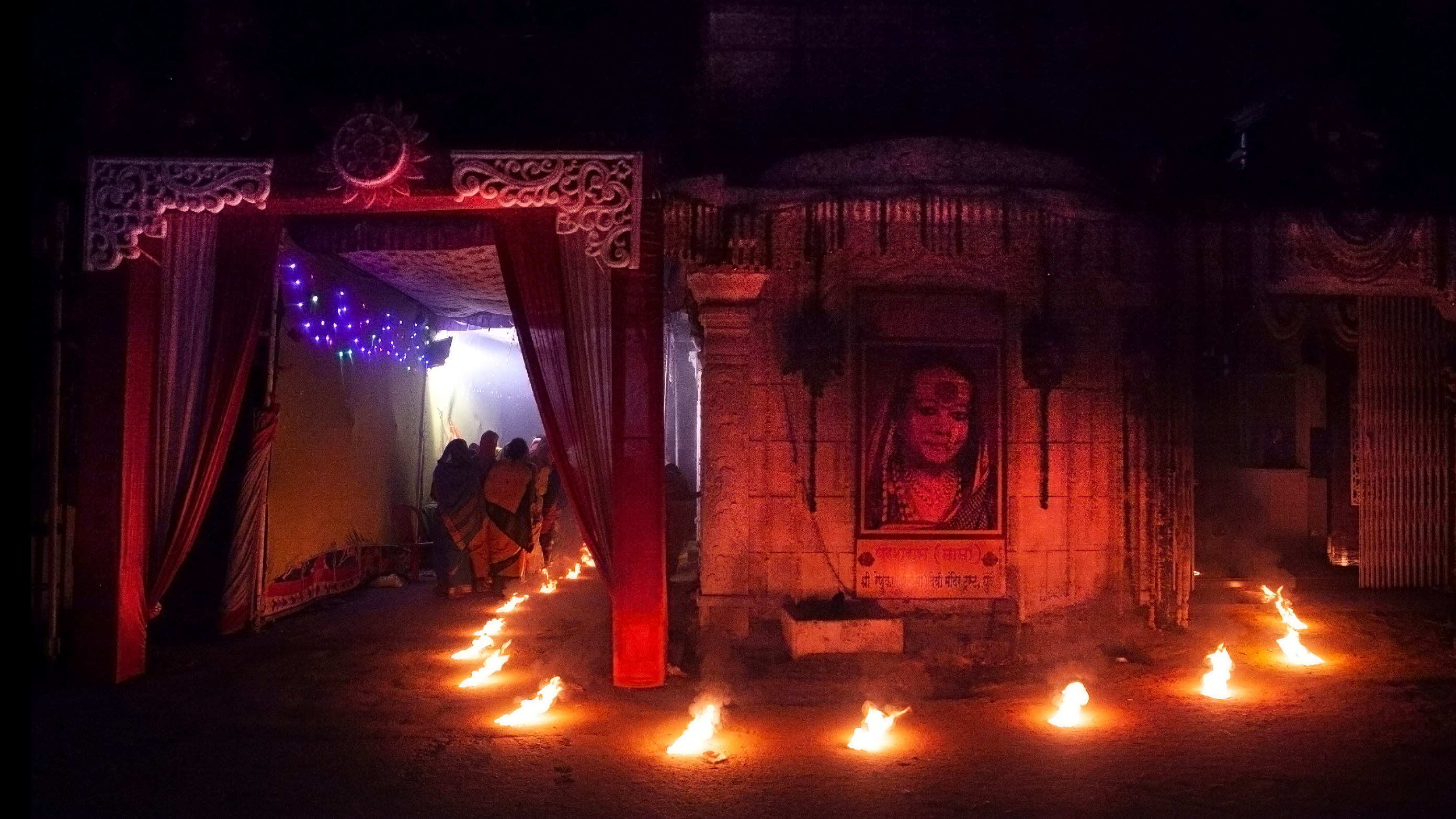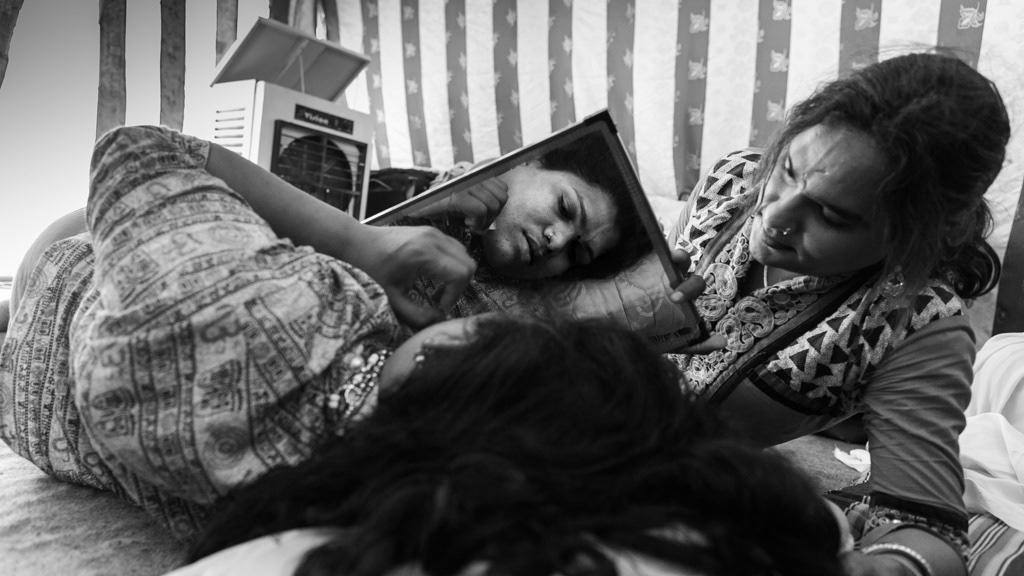The proposed work is a photographic documentation of a remarkable new development on socio-religious structures prevalent at the Kumbh Mela, the world’s largest Hindu religious gathering. The Kumbh Mela is an ancient tradition, strongly carried forward into modern times. It’s purpose has always been to bring together all the significant religious gurus of the time, to share their teachings with millions of pilgrims and the other attending gurus. The Kinnar Akhada was the first religious group to join the Kumbh Mela solely comprised of approximately 5000 members of India’s transgender community, in 2016. India’s transgender community has since colonial times been one of the country’s most marginalised groups. In many ways the Kinnar Akhada was an attempt by the transgender community to integrate itself into the Hindu social and religious mainstream, based on their interpretation of ancient Hindu religious texts. The Kinnar Akhada seeks empowerment of their community through embracing and reimagining traditions, beliefs and practices of mainstream, religious communities found in urban and rural areas of India.
In 2014, the Supreme court of India recognised the Hijra community by creating a Third Gender category which is now used in all legal documents. The Hijras are a transgender community in India, that can trace its roots to the pre-colonial Moghul dynasties. They are a tight-knit group with distinct practices and traditions, largely drawing on Muslim Moghul origins and exist in contrast to many Hindu religious practices. As such, there was a feeling among the founding members of the Kinnar Akhada that they should find a community rooted in the Hindu religion which would allow them to continue the spiritual practices they learned growing up.
In the traditional Sanathana Dharma (a Hindu code of ethics, through which one achieves enlightenment and liberation) the Kinnars were an integral part of the Hindu ethos and were ingrained into the hierarchical structures laid down by ancient Hindu religious guru, Adi Sankaracharya. Centuries of marginalisation, to a certain extent during the Moghul era, and to a much larger extent during British colonisation, have resulted in their being effectively excommunicated from society, but also from a religion that forms a very important part of their cultural identity. The Kinnar Akhada, in many ways, is an attempt to retain a belief system that was always intrinsically a part of their collective psyche and reviving it in a form that is culturally palatable with the contemporary social realities that the community finds itself in. The Kinnar Akhada thus lends itself to profound existential moorings and also ignites a discourse on gender identity in mainstream religious, as well as secular, parts of society.
My photography has highlighted how the Kinnars are working towards keeping their own belief systems secure while charting a way forward in this milieu of accelerated changes. The work candidly documents the month-long ritual in which the Kinnars, for the first time, have asserted themselves as a bona fide sub-group within the Kumbh (or the Maha Kumbh in this case) festival and the Hindu community at large.
